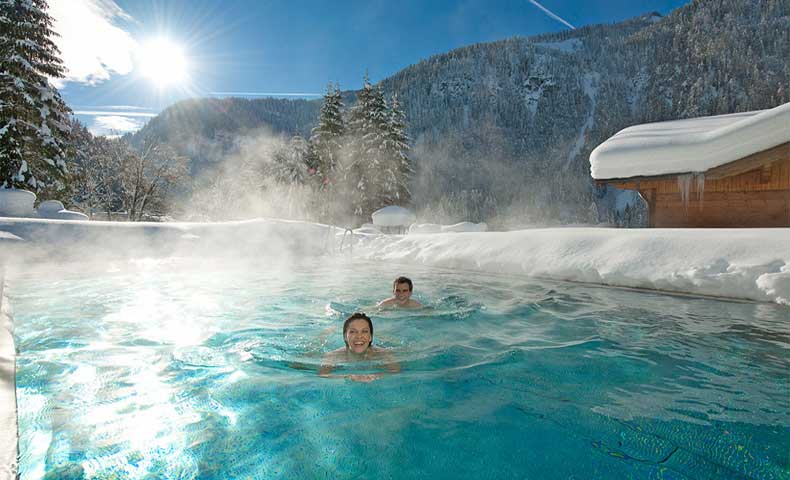
While lots of people enjoy their swimming pools in summer and warm days in the off seasons, in many climates spring and autumn are really too cold for swimming in cold water. To get more use from your pool you may want to consider heating the water. This can be done constantly if you use the pool a lot, or occasionally if you are not into swimming every day. Heating the pool means you can jump in for a dip even in the winter.
Here are 3 main ways to heat the water in your pool.
- Solar heating. This doesn’t use solar panels like solar electricity. It uses rubber matting on the roof of the house. The sun heats the matting and a pump pushes pool water through it. The water is warmed before returning to the pool. This is good for people who live in sunny climates and have a large roof space. It may not be so good an option for those who live in areas where there is often cloud cover. It is most effective if the matting is installed on a north or west facing roof and the area of matting equals about 80% of the pool surface. It may seem strange, but this same set-up can also be used to cool the pool water down, for those who live in tropical climates. The water is simply pumped through the matting at night instead of day.
- Gas heating can be used to heat the pool water in areas where there is a supply of natural gas. Constant heat can be achieve with the use of a thermostat, but occasional use would be more economical. However, since it can take up to 24 hours to heat the water sufficiently, you have to plan ahead for that warm swim.
- Electric heating using heat pumps. Heat pumps are similar to air-conditioning and refrigeration in the way they work, using the same technology. They draw water through the pump where it is heated before returning to the pool. This option is great if you want year round temperature control, although it is the most expensive of the three. It takes 2-3 days to heat the water in the pool, which is why it is best to have it going all the time. If you just want to heat it for special occasions you need to plan ahead carefully.
The cost of heating a pool can be reduced by installing a solar/thermal pool blanket that helps to trap the heat and prevents loss overnight. It also prevent water evaporation. In some states, governments offer a rebate on the price of pool blankets so this can bring down the cost.






